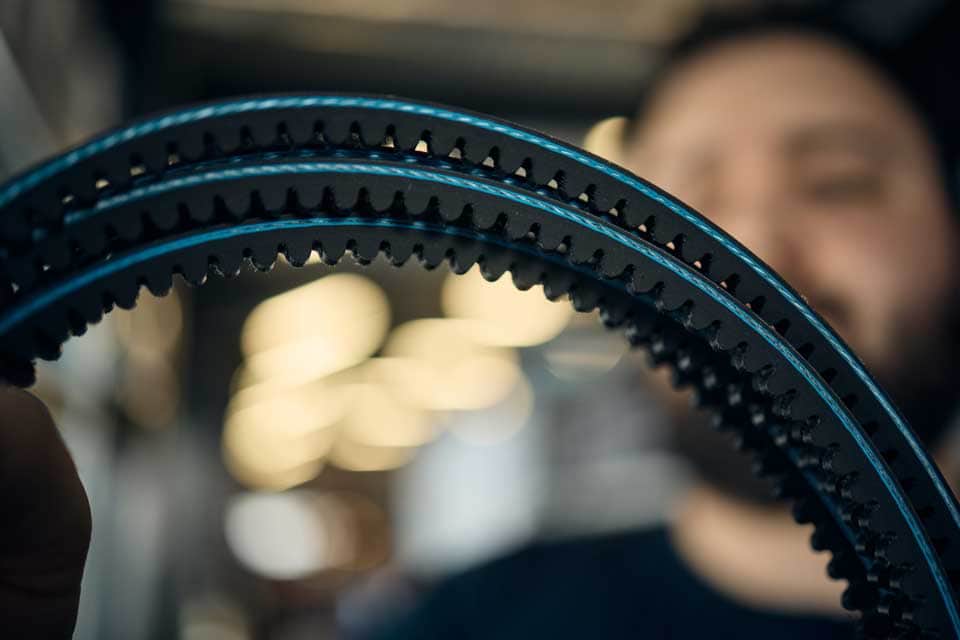Drive belts such as V-belts, timing belts or round belts are central elements in many machines and systems. Regular maintenance and correct sizing are crucial for the operational safety and longevity of these components.
Sizing of belts
To find a suitable replacement belt, the following dimensions should be determined:
Spine width: Measure the wide, flat side of the belt.
Height: Determine the thickness of the belt from the back to the tip.
Length: Determine the thickness of the belt from the back to the tip. Determine the thickness of the belt from the back to the tip. different lengths are common:
Li (inside length)
Lw or Ld (effective length)
La (outside length)
The selection of the correct length depends on the specific belt profile. For precise measurements, we recommend using a flexible tailor’s tape measure or a belt gauge.
Maintenance of belts
Regular maintenance extends the service life of drive belts and prevents unplanned breakdowns.
Check the tension: If the tension is too high or too low, this can lead to premature wear. Use suitable measuring devices to ensure the correct tension.
Check for wear: Look for cracks, fraying or shiny spots that may indicate material fatigue.
Observe replacement intervals: Even if some belts are considered maintenance-free, they should be checked regularly in accordance with the manufacturer’s recommendations and replaced if necessary.
You can download the relevant information here:
If you have any questions, please get in touch with your account manager or contact us here:
